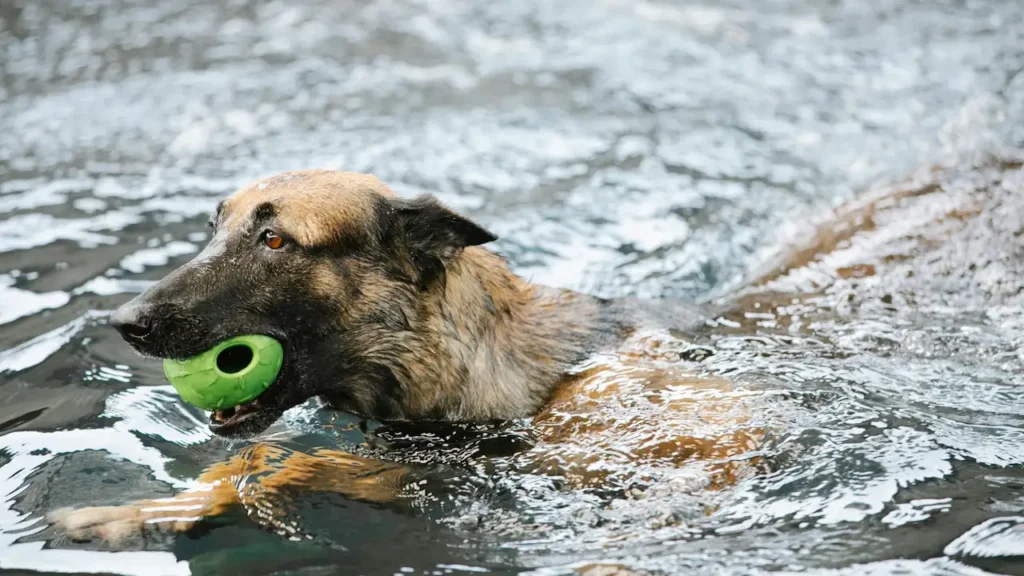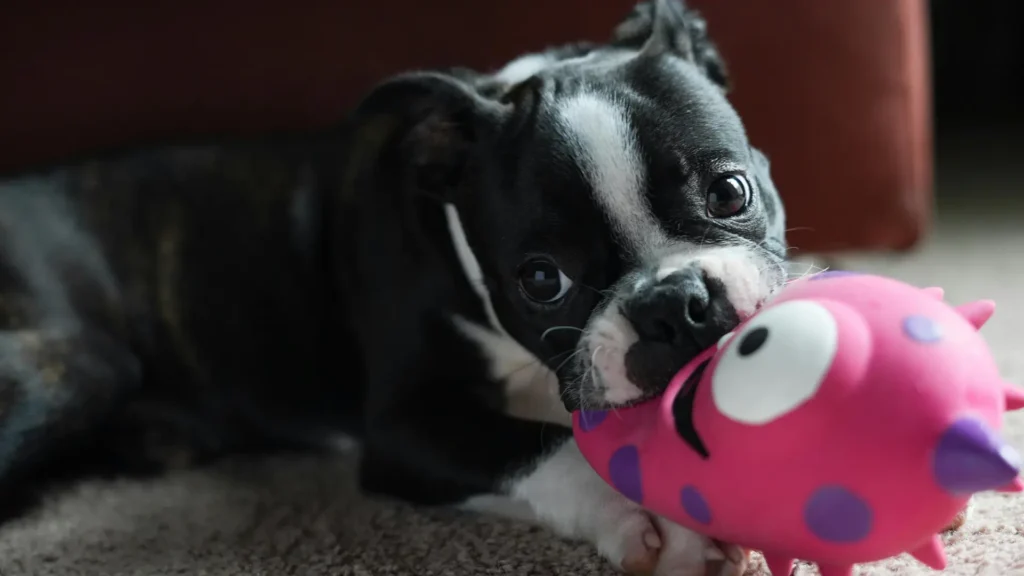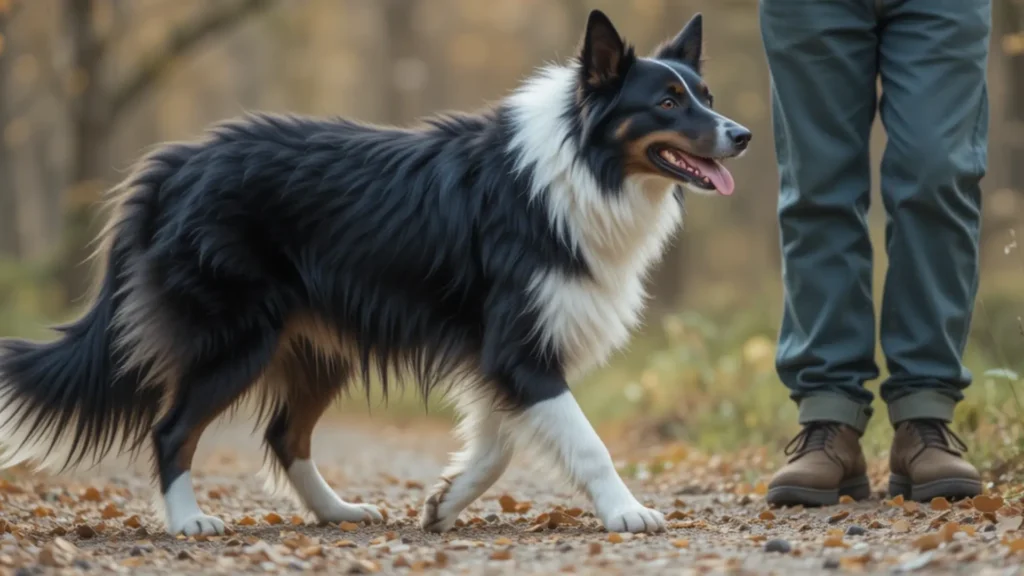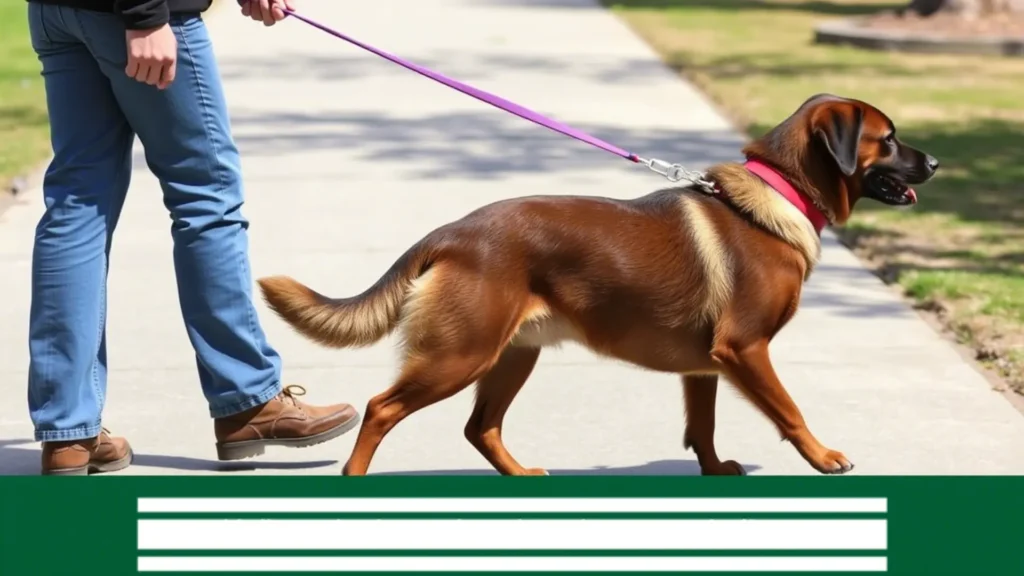Destructive chewing in dogs is frustrating for pet owners. Your dog chews your favorite pair of shoes, corner of your couch, or electrical cords. These destructive behaviors are harmful for your financial and mental health. Fortunately, with patience, consistency, and the right strategies, you can manage and redirect this behavior effectively.
Why Do Dogs Chew?
Before diving into solutions, it’s important to understand why dogs chew in the first place. Chewing serves several purposes for dogs:
Puppies, like human babies, go through a teething phase between 3 and 6 months of age. During this time, their gums are sore. Chewing helps relieve discomfort. Bored dogs resort to chewing as a way to entertain themselves or cope with anxiety.
They use their mouths to explore the world around them. If they encounter something new, they chew on it to learn about its texture, taste, and smell. Some dogs chew when they’re stressed. In rare cases, excessive chewing can be a sign that your dog isn’t getting enough nutrients from their diet.
Understanding the root cause of your dog’s chewing behavior is crucial in addressing the issue effectively.
Strategies to Manage Destructive Chewing
Provide Appropriate Chew Toys
One of the simplest and most effective ways to manage destructive chewing is by providing your dog with plenty of appropriate chew toys. Giving your dog safe, durable toys help redirect this behavior away from your furniture, and shoes.
Some dogs are gentle chewers, while others are aggressive. Some dogs can destroy softer toys quickly. For them, look for durable toys. These are typically made from rubber or nylon and are built to withstand intense gnawing. Brands like Kong, Nylabone, and West Paw offer durable toys.
Dogs get bored with the same toys over time. To keep your dog’s interest, rotate their toys regularly. Introduce a few toys at a time and swap them out every few days or weeks. This keeps the toys new and exciting for your dog. This reduces the likelihood that they’ll seek out other objects to chew on.
Avoid giving your dog old shoes, socks, and other personal items as toys. While it may seem harmless, this can confuse your dog and make it difficult for them to distinguish between acceptable and unacceptable items to chew.
A dog that has been given an old shoe to chew on may not understand why chewing on your new pair of sneakers is off-limits.
Puppy-Proof Your Home
It’s essential to take steps to dog-proof your home. Puppies, in particular, are naturally curious and will explore their environment using their mouths. By removing potential chew targets, you can prevent accidents and protect your belongings.
Start by identifying and removing items that could be tempting chew targets. Common culprits include shoes, remote controls, cables, children’s toys, and small objects. Keep hazardous items out of reach.
Consider using baby gates to limit your dog’s access to certain areas of the house. Crates can also be a useful tool for managing destructive chewing. They provide a safe space where your dog can relax without access to forbidden items. Make sure the crate is comfortable and stocked with appropriate chew toys to keep your dog entertained.
You can’t easily move furniture legs, baseboards, and electrical cords. Consider using bitter sprays on them. These sprays have a strong, unpleasant taste that discourages dogs from chewing.
Simply apply the spray to the item, and most dogs will quickly learn to avoid it. Be sure to reapply the spray as needed.
Increase Physical and Mental Stimulation
Many dogs chew out of excess energy. Ensuring your dog gets enough physical exercise and mental stimulation is one of the most effective ways to reduce destructive chewing. A tired dog is less likely to engage in unwanted behaviors.
Regular physical activity is crucial for keeping your dog healthy. Depending on your dog’s breed, age, and energy level, aim for at least 30 minutes to 2 hours of exercise each day. This could include walks, runs, playtime in the yard, and trips to the dog park. High-energy breeds require intense exercise.

In addition to physical exercise, mental stimulation is equally important. Interactive toys are a great way to keep your dog’s mind engaged. Puzzle toys, treat-dispensing toys, and snuffle mats are excellent options for providing mental challenges. These toys encourage problem-solving and reward your dog with treats when they figure out how to access the food.
These toys require your dog to solve a puzzle. They come in various difficulty levels. You can choose one that matches your dog’s skill level. As your dog becomes proficient, you can increase the difficulty to keep them challenged.
Use treat-dispensing toys. These toys release treats as your dog plays with them. Kong Classic is a popular choice, as it can be stuffed with peanut butter, cheese, and kibble and frozen to provide long-lasting entertainment.
Snuffle mats mimic the experience of foraging for food in the wild. You can hide treats within the fabric strands, encouraging your dog to use their nose to find the food. Snuffle mats are particularly beneficial for dogs that enjoy sniffing and exploring with their noses.
Short, regular training sessions teach your dog good manners and provide mental stimulation. Training exercises engage your dog’s brain and reinforce positive behaviors. Reward-based training is particularly effective in keeping your dog focused and motivated.
Always use positive reinforcement when training your dog. This means rewarding them with treats, praise, and affection when they exhibit the desired behavior. Avoid punishing your dog for chewing on inappropriate items. This can lead to fear and may worsen the behavior.
Keep training sessions short (5-10 minutes) and frequent. This helps maintain your dog’s focus and prevents them from becoming overwhelmed.
By combining physical exercise with mental stimulation, you can help tire your dog out both physically and mentally. This reduces the likelihood that they’ll resort to destructive chewing out of boredom or excess energy.
Address Separation Anxiety
Separation anxiety is a common source of excessive chewing. Dogs with separation anxiety often exhibit behaviors such as excessive barking, pacing, drooling, and destroying objects shortly after you leave the house. To help your dog cope with being alone, consider the following strategies:
One of the best ways to ease your dog’s anxiety about being left alone is to practice gradual departures. Start by leaving your dog alone for a few minutes at first. Gradually increase the duration over time.
This helps your dog become comfortable with your absence and teaches them that you will always return. For example, you might start by stepping out of the room for 30 seconds, then gradually work up to leaving the house for 5, 10, or 20 minutes. Over time, your dog will learn that your departure doesn’t mean something bad is going to happen.
Many pet owners make the mistake of making a big fuss when leaving or returning home. While it’s natural to want to shower your dog with affection, this can actually increase their anxiety. When you make a big deal out of leaving or coming back, it signals to your dog that your absence is something to be worried about.
Instead, try to keep your goodbyes and hellos calm and low-key. Simply say goodbye in a neutral tone and avoid overly enthusiastic greetings when you return. Over time, this will help your dog feel relaxed about your comings and goings.
Create a designated safe space for your dog. It can provide them with a sense of security when you’re not around. This could be a crate, a specific room, or a cozy corner of the house where your dog feels comfortable and secure.
Make sure this area is stocked with toys, cozy bedding, and an item of clothing that smells like you. Some dogs find comfort in hearing background noise, so you might consider leaving a radio or TV on to provide soothing sounds while you’re away.
Introduce crate training. It’s important to introduce it gradually and make it a positive experience for your dog. Never force your dog into the crate. Instead, encourage them to enter the crate voluntarily by placing treats, toys, and meals inside. Over time, your dog will come to see the crate as a safe and comforting place rather than a form of confinement.
You might consider using calming aids to help reduce your dog’s anxiety. Pheromone diffusers, calming supplements, and anxiety wraps can help soothe anxious dogs. These tools work by mimicking the natural calming pheromones that mother dogs release to comfort their puppies.
Teach the “Leave It” Command
Train your dog to respond to the “leave it” command. It is incredibly useful in preventing destructive chewing. This command teaches your dog to stop chewing something.
To teach “Leave It” command, hold a treat in your closed hand and let your dog sniff it. Most dogs will try to get the treat by licking, pawing, or nibbling at your hand.
As soon as your dog stops trying to get the treat, say “leave it” in a firm but calm voice. Immediately reward them with a different treat from your other hand. The key here is to reward your dog for stopping the behavior.
Once your dog has mastered the “leave it” command with treats, you can start practicing with objects around the house. Place a toy on the floor and tell your dog to “leave it.” If they obey, immediately reward them with praise or a treat.
Practice the “leave it” command regularly, and reinforce the behavior with treats and praise. Over time, your dog will learn to associate the command with stopping unwanted behaviors.
Be patient during the training process. Persistent chewers take longer to learn the “leave it” command than others. Stay consistent, and don’t hesitate to seek help from a professional trainer if you’re having trouble.
Destructive chewing is a common challenge, but it doesn’t have to be a permanent problem. By understanding why your dog chews and implementing consistent training and management strategies, you can redirect this natural behavior in a positive way.




